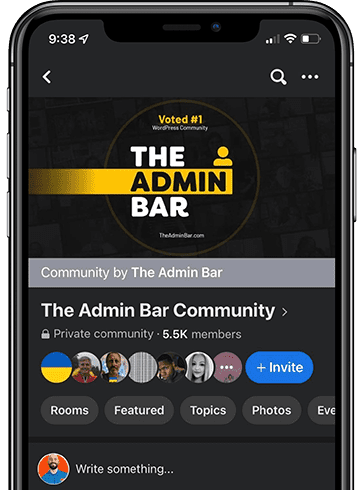A notification arrives in your inbox. It’s from one of your favourite brands, and you love their emails. You click to read what they have to say.
Email marketing is an effective communication tool that gives you a direct connection to the people who care most about your brand.
In this post, I want to share with you why email marketing should be an important marketing channel for your digital agency in 2024.
Grab your favourite drink, and let’s dive in together.
Why email marketing?
Email is one of the most popular communication methods in the world.
According to data from Statista, there were over 4 billion email users worldwide in 2022. This number is set to grow to 4.76 billion by 2026.
As an agency owner, you’ll predominantly be working with other business owners, helping them to have a great web presence or be found online. Your clients use email. It’s one of the best ways of reaching them.
Talking of reach, have you noticed the changes to social media platforms over the last few years?
In the old days, you could write a post on your Facebook page, and it would be shown to every one of your followers. Now, only a very small percentage of your audience will actually see any of the messages that you share.
It’s a change that forces businesses to ‘pay to play’ if they want their messages to be seen. Now you have to join every other advertiser just to get your message in front of people who already want to see it.
Email doesn’t have this same constraint. When you send out an email to your audience, it lands in every inbox. Your message will be seen by the people who want to see it the most.
Another benefit to email is that it’s not going to disappear. Remember Google+ or even MySpace?
Unlike many communication platforms, email is an integral part of everyday life. It’s a preferred communication method for many. It’s here to stay, and it gives you the ability to communicate with your audience on an ongoing basis.

Email marketing isn’t just about sales
Despite the name, email marketing isn’t just a process where you bombard your subscribers relentlessly with offers.
There’s a well-known standing desk company who are absolutely relentless with their email marketing. I purchased a couple of desks for our office in mid-2020.
In the following 180 days, they sent 97 emails. Every single email was pitching their products. And best of all, they were pitching the products that I had already purchased.
This is the complete opposite of email marketing.
What the company should’ve done is nurture me as a new customer. They could’ve sent me useful guides and videos on how to get the most from my new standing desk.
By showing they cared about me, I would’ve trusted their brand further and been perfectly positioned to make an additional purchase. Perhaps a new floor mat, stool or even accessories for my desk.
It’s easy to fall into the trap of only talking about sales. There’s a common figure that you’ll hear when people talk about the ROI (Return on Investment) of email marketing. According to Constant Contact’s research, the average business will make $36 for every $1 that they invest.
That’s a pretty good return, right? I agree, and this is where people fall into the trap. Instead of focusing on building better relationships with their audience, they just push for more sales.
Yes, sales are part of email marketing. I can tell you many stories about how a single email generated five to six figures in sales for my brand or for one of my clients. But, sales are not the core principle of email marketing. They’re just the happy endings that you reach when a lead or existing client truly connects with your brand.

Emails build trust with your audience
There’s a lovely irony when talking about emails as we head into the latter part of November.
This is when you’re receiving emails left, right and centre. A few of them will be interesting, but most will be deleted.
Ignoring the percentage of people who hate receiving marketing communications of any kind, there’s a common reason why certain emails will be deleted. It comes down to trust.
When a brand takes the time to communicate regularly with its audience, they build up trust. Their email marketing efforts can deliver value, inform and delight while also positioning their products or services as the right choice.
Regular communication leaves a brand front of mind. Think about the emails you receive. There are certain emails, such as The Friday Chaser, that Kyle sends each week which stand out in your inbox.
Kyle builds up goodwill and trust from you with every newsletter he sends. There’s a thought-provoking message or tip at the start, a round-up of news from inside the Facebook group and interesting external links.
If Kyle were to send an email announcing a new product launch, the goodwill and trust he has earned through regular emails will make a big difference. More people will pay attention to the email, more will read it, and if the offer is right, more people will buy.
For comparison, let’s imagine that you purchased a (fictional) WordPress plugin five years ago, in 2018.
You enjoyed using the plugin for a while, maybe you still use it now. But, since purchasing the plugin, you’ve never heard from the company, aside from a yearly renewal notification. They’ve been relegated to a line item in your accounts.
What happens when the plugin company suddenly send you a marketing email five years later? Statistically, you’re most likely to delete it. You might read it if you’re bored or in the process of waiting a decade for your client to send over some content. But it will get deleted.
It comes back to trust, as I said. In our example here, Kyle built up the trust and nurtured you as part of his audience. The plugin company did nothing, hoping instead that you’d open their email while they screamed their message at the top of their lungs.

How you can benefit from email marketing as an agency owner
Email marketing gives you a wide range of opportunities in your digital agency.
Let’s run through seven key areas and the benefits that you can enjoy when you choose to take email marketing seriously.
Lead generation
The feast or famine cycle is a problem for many business owners.
Agency owners work hard to secure new work but then focus all of their energy and attention on delivering the work. They forget about marketing and finding the next project.
If you don’t have a process that consistently generates leads for your business, you’re going to see peaks and troughs in your agency’s revenue.
With email marketing, you can set up marketing funnels and opt-ins on your website. Your website visitors can opt-in to receive the free guides, checklists, mini-courses or similar that you’re offering.
You’ll deliver the free content via email and then send a nurture sequence that builds on your free content and continues to establish trust. Your emails deliver value to your new lead, establish your expertise and then position an offer.
As a side note, if you want to get started quickly with marketing funnels for your agency, you can check out Funnel Packs (I’m a Co-Founder alongside my partner Mel).
Nurture existing clients
There’s a question I often think about when I’m talking to agency owners about email marketing: Why do so many agency owners forget about their clients after they finish a project?
Your clients are an important asset to your business. For someone to become a client, it means that you’ve done the hard part already. The client already knows, likes and trusts you.
Email marketing helps you to continue the conversation with your existing clients. You can nurture them through your regular emails, delivering value and sharing tips or new ideas.
Your emails help to build a stronger connection with your clients. There’s far less worry about someone stepping in and turning their head if you’re sharing value on a regular basis.
Send important updates
From time to time, you’ll have important updates that you want to share with your audience via email.
For example, you might want to send out an email about pricing changes for your Care Plans to your existing clients. (If this isn’t something you’ve thought about recently, here’s your reminder to raise your Care Plan prices)
I spoke with an agency owner earlier this year who was planning to send out 200 manual emails to his clients about pricing updates. While this is always good to do, manual just isn’t the way. If you allow two minutes per email, that would be 400 minutes or over 6.5 hours.
Thankfully, after our conversation and a little guidance, he was able to craft his update email and send it out to all of his Care Plan clients in under an hour.
Important updates and announcements are made easy with email marketing. You can send an email to a specific segment of your audience. In our example above, the segment would be your Care Plan clients.
Stay front of mind
This actually goes hand-in-hand with nurturing your existing clients. However, I’ve given it a section of its own because you’ll want to stay front of mind with your leads, too.
What do I mean about staying front of mind?
When you send a regular email to your audience, you stay in their memory. You’ll often find your subscribers eagerly looking forward to your emails. This is something Kyle gets to hear a lot with the feedback to his emails inside the TAB Facebook group.
Now, let’s imagine one of your subscribers realises they need help with their website or marketing. Who are they most likely to reach out to?
They’ll reach out to you because you’re easy to recall. You’ve been sending them great emails and delivered value. They’ve benefited from your advice, and you’re the first person they think of when they need help.
This is a really important point to remember. Your audience is all at different stages of the buying cycle. As wonderful as it would be, you will never have 100% of your audience ready to buy from you.
Staying front of mind means that you’ll be the right choice when someone is ready to move forward.
Share your offers
This should be fairly obvious, but it’s worth talking about as there is a clear financial benefit to your agency.
As I talked about earlier in this post, you don’t want to be pushing sales in every email, but there are plenty of opportunities to generate sales.
You could be launching a new product or service. You might have some space freed up in your schedule. Or perhaps you’re in a position where you need sales right now. In each of these situations, email marketing is a powerful sales ally.
Whenever you want to make an offer to your audience, it’s as easy as writing a few lines in an email and pressing send. Now, it’ll make its way to the inbox of every reader, and they’ll be able to take action if the offer is right for them.
One of my favourite ways to sell via email is to offer a pre-sale. In fact, this should be a prerequisite for every business before they create and sell a new product or service. You need to know that your audience actually wants to buy. There’s no better way to do that than by asking them to purchase. It immediately validates your idea.
Drive traffic to your website
As wonderful as it would be, there are very few agencies that will have their audience regularly visiting their website.
Thankfully, another simple benefit of email marketing is the ability to drive traffic back to your website. You can utilise your emails to send your audience to your latest blog post, podcast episode or video tutorial.
Using Kyle as an example again, he directs users back into his Facebook group by sharing a round-up of some of the best posts in his emails. It helps people to see content that they may have missed out on and encourages further conversation.
Never be afraid to promote your valuable content to your audience. You’re doing them a favour by giving them the opportunity to consume it.
Stand out from the crowd
This is my favourite benefit of email marketing by far.
There are millions of agency owners, freelancers, web designers and marketers all vying for the attention of clients around the world.
This leads to people competing on different aspects, with one of the worst being a race to the bottom with pricing. Thankfully, that is reserved for the less experienced, but it’s still sad to see adverts for a $50 website appear on social media.
We’re still at a stage where the majority of digital agencies don’t take emails seriously. I should know, as over the last 3 years, I’ve signed up for more than 300 agency newsletters. Only a handful actually send anything out regularly.
When you choose to take email marketing seriously, you’re giving yourself a golden opportunity to stand out from the crowd. Your audience gets to see your personality and learn from the content you share.

How to get started with email marketing
It has never been easier to get started with email marketing. With technological advances over the last decade, email marketing platforms have become more intuitive and user-friendly.
Realistically, the only thing stopping you from sending out emails is you and any perceived lack of time.
So, let’s run through a simple process for how you can get started with sending out emails to your audience. There are five main steps and three additional steps that aren’t required but recommended. I’ve labelled those with ‘Bonus Points’.
Pick an ESP (Email Service Provider)
You’ve got a wealth of options when you’re looking to pick an email service provider. There are long-established companies, newcomers to the market and even a few plugins that you can add to a WordPress site.
My recommendation would be to go with a trusted and established platform. It provides you with peace of mind, knowing that your provider isn’t going to disappear into the night.
I personally use ConvertKit and Active Campaign to handle email marketing for our brands. My preference is ConvertKit, but they’re both powerful tools that can handle a wide range of scenarios.
If you’re just starting out, one option to look at is MailerLite. They have a free plan that you can start things off with, including automation as standard.
Automation is a very important thing to have access to. You can use automation to send out sequences to your audience. This is ideal if you’re creating marketing funnels, sending a welcome sequence, or even sending a sales campaign.
Set up your account
Once you’ve chosen an ESP, you’ll need to set up your account. This is a simple process and most platforms will have a step-by-step guide that walks you through what you need to do.
Typical things that you’ll be setting up include your sender email address, DNS updates (SPF, DKIM, DMARC), adding a physical address and so on.
The physical address, usually your office address, is an important element to add. It’s a legal requirement in most jurisdictions around the world. Every email platform will ask you to enter this.
If you encounter any issues with setting up your account, reach out to your ESP’s friendly support team. They’re there to help you, and it’s in their interest to make the onboarding experience awesome for every new customer.
Decide on your email frequency
How often do you want to send emails to your audience?
Most companies choose to send a weekly or monthly email. This gives them the opportunity to reach out to their audience regularly without overburdening their subscribers.
Over recent years, some email marketers have switched to daily emails. There is plenty of data to back up this switch as it does increase engagement, but it’s going to be too much for most busy business owners.
My recommendation is to send weekly emails. This allows you to reach out to your subscribers once a week, share a little value and occasionally make an offer. Weekly emails get a lot more engagement than monthly emails, helping you to stay front of mind.
Let your existing clients know about your list
Now that you’ve set up your account and decided how often you will send emails, you should let your existing clients know about your newsletter.
Contact your clients and invite them to sign up for your newsletter. This is a friendly way of doing things and allows them to opt in, which is a legal requirement in many areas.
Include details in your invite, such as what you’ll be sending in your newsletter, the frequency of your emails and what to expect. This is your chance to showcase the value that you’ll be sharing.
There are some jurisdictions where it’s okay to send email newsletters to existing clients. If you live in one of these areas, you could choose to skip the invite step. However, I’d still recommend inviting them as it’s much friendlier.
Add a sign-up form on your website
There’s no use in having an email newsletter if you don’t give people a chance to sign up for it.
Add a sign-up form on your website so your visitors can opt-in to receive your emails.
You may choose to have a whole page dedicated to your newsletter. This gives you the additional option to showcase an example email and any reviews or feedback that you’ve received from your subscribers.
Don’t forget that your blog posts also present a perfect opportunity to add people to your new email list. You could offer some additional content at the end of a blog post, which leads to a free download and an option to join your list.
[Bonus Points] Set up a branded template
Instead of using a boring or generic template for your emails, you can create your own branded email template. This is a template that includes your logo, brand colours and any additional elements that you like. Branded templates help your emails to stand out and stay in the mind of your readers.
Most ESPs will allow you to pick from a range of templates. You can use one of these as a base for your branded template, or you can start from scratch. If you’re new to email marketing, customising an existing template will be much easier for you.
As you customise and set up your branded template, make sure you send yourself test emails. Try to view these emails using as many different devices and email platforms as you can. It’s important to understand how your emails will look when your subscribers receive them.
For example, you may be surprised just how differently emails can be displayed if a user’s operating system is running in dark mode. Your testing will show you these nuances and give you opportunities to make adjustments as needed.
[Bonus Points] Create a welcome sequence
Welcome emails are some of the most important emails that you’ll ever send. If you want to make the best first impression with a new subscriber, you should take the time to set up a welcome sequence.
The first email you send to subscribers after they join your list will have the highest open rate of all your emails. It’s an email that your subscriber expects, and they’ll eagerly await its arrival.
Your welcome emails set the scene for what is to come. They let your subscribers know more about your business, more about you, how often you’ll send emails and what they should expect.
A typical welcome sequence could be 3-7 emails in length, although you can just use a single email if you prefer. If you’re creating a sequence, you’d set this up using automation in your email platform of choice.
[Bonus Points] Segment your audience
Remember the story I shared about the standing desk company earlier in this post? If they had segmented me as a customer, they could’ve sent me emails that were actually relevant to my needs.
Segmentation is where you separate your audience into distinct groups. An easy example of this would be to have a segment for Care Plan clients. You may also have one for SEO clients, one for Web Design clients and so on.
The majority of ESPs will allow you to segment your subscribers using tags, groups or custom fields. If you’re not sure of the best option for your provider, check their help documentation.
When you use segmentation, you’re not sending the same message to everyone on your list. Instead, you can send a specific message to a specific group of people.
For example, if we think again about raising your Care Plan prices. It’s easy to write an email and send it to just your Care Plan clients segment.

Overcoming your objections
I’ve been sending emails on behalf of clients and also for my own businesses for the last 15 years. Over the last 3 years, I’ve helped more than 500 agency owners with their email marketing.
When talking to agency owners about email marketing, there are two objections that come up time and time again. They either don’t know what to write or they don’t feel they have enough time.
Let’s debunk those objections.
“I don’t know what to write”
I do understand this objection. It’s incredibly easy to be stuck staring at a blinking cursor.
A typical email will be around 200-500 words in length. It should be something that your subscribers can consume in just a few minutes. Keeping your emails shorter and to the point helps to respect a subscriber’s inbox.
Your emails can share valuable tips, ideas, industry news, service updates and more. And, yes, you can pitch from time to time. Don’t be afraid of it. It’s okay to sell.
Every email starts with an idea or message that you want to share. This is your email topic.
Break down the topic into a series of bullet points. Somewhere between 5-10 bullet points will be your sweet spot. Now, all you need to do is write out a paragraph or two for each bullet point.
It’s easy to be afraid of not knowing what to write, but it all gets easier when you break your email into bite-sized chunks. Before you know it, you’re engaged and finishing your email.
“I don’t have enough time”
There’s nothing busier than an agency owner who is knee-deep in client projects. This is true even when you’re growing old as you wait for content or browse a Facebook group for the 12th time today.
Let me be honest with you for a moment. You should set aside time in your calendar each week to market your business. Choosing not to do this leaves you vulnerable to the feast or famine cycle.
The truth is that email marketing really doesn’t take a great deal of your time. You’re not writing a novel. A 250-word email is the equivalent of writing five Facebook comments that are three sentences in length each.
You can also benefit from the scheduling features that every major ESP provides. This means that if you set aside a few hours each month, you can write and schedule your emails in advance.

You don’t have to do it alone
If you find yourself struggling with the idea of carrying out email marketing by yourself, there are ways to make it easier.
You could choose to hire a copywriter. Typically, a good copywriter will start around $100 – $150 per email that they write for you. Abby wrote a great post on how much a copywriter costs previously on this blog.
Another option to consider would be to write the emails yourself but ask a VA to assist with scheduling them in your ESP. Your VA would only need to spend an hour or two to schedule your emails, so this would cost less than $100 per month.
Finally, you could utilise a service that was designed for agency owners like you. Mel and I have been running Nurture Copy since December 2020. Over the last 3 years, we’ve helped over 500 agency owners with their email marketing.
This month, we released Nurture Club, where you can find pre-written email newsletters, blog post ideas, video tutorials and more. It’s $200 per year at the special launch price.
The best time to start is now
If you want to generate more leads, build stronger relationships with your clients and sell more of your services to them, email marketing is one of the best opportunities for you.
There has never been a better time to start. Email is here to stay. It’s easier than ever to sign up with an email service provider and start sending emails.
Staying front of mind with your clients means that you’re well-placed to assist them whenever they need help in the future. You don’t have to worry about other agencies emailing or calling, promising the moon on a stick and saying that the grass is greener when working with them.
Above all else, email gives you a powerful tool to help and delight others.
If you’re anything like me, then you enjoy helping people and delivering value. You like knowing that you’ve made the world a little better and enriched the lives of your subscribers.
And, as Kyle said to me yesterday: “The worst time to start email marketing is when you’re trying to sell something.”
I completely agree with him.
You can’t start with sales. You need to build trust first. Emails build trust.






